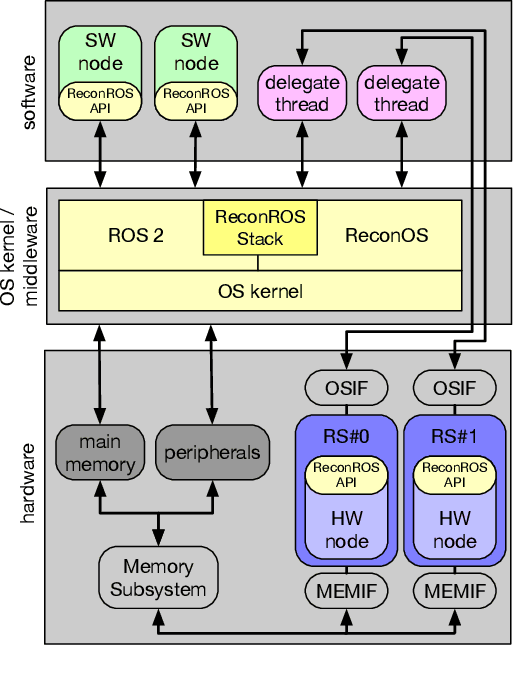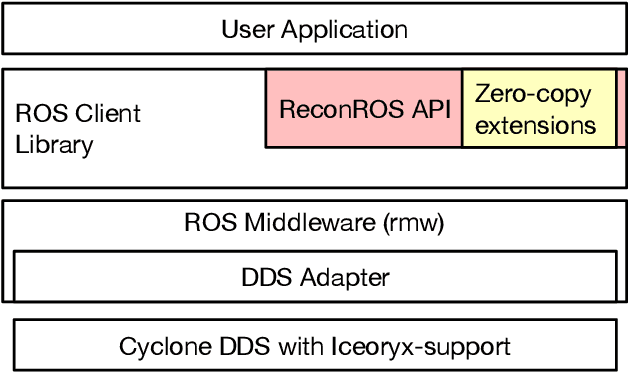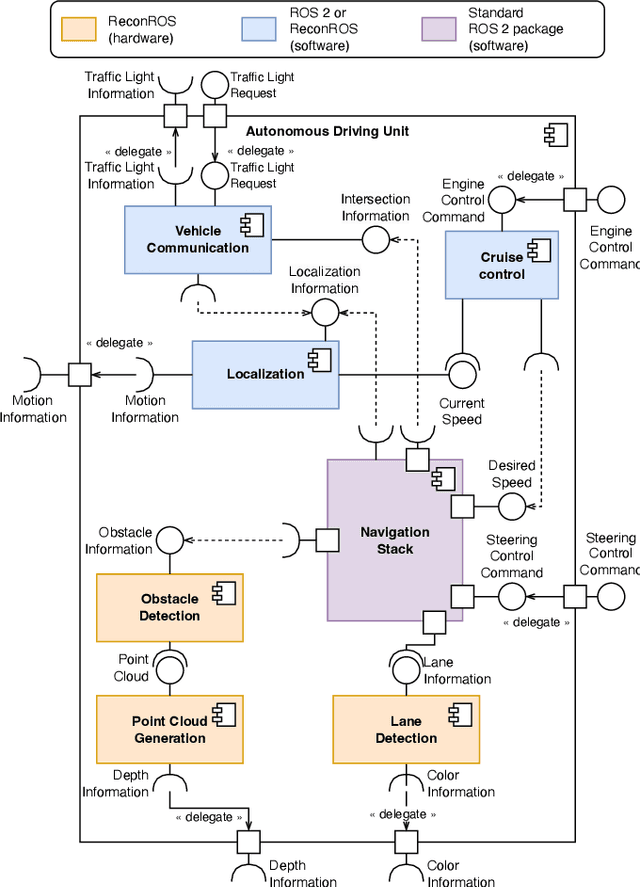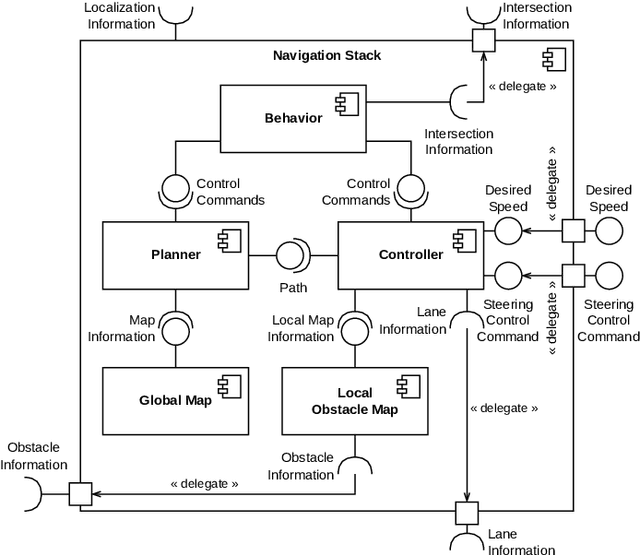Alexander Philipp Nowosad
AutonomROS: A ReconROS-based Autonomonous Driving Unit
Sep 05, 2023



Abstract:Autonomous driving has become an important research area in recent years, and the corresponding system creates an enormous demand for computations. Heterogeneous computing platforms such as systems-on-chip that combine CPUs with reprogrammable hardware offer both computational performance and flexibility and are thus interesting targets for autonomous driving architectures. The de-facto software architecture standard in robotics, including autonomous driving systems, is ROS 2. ReconROS is a framework for creating robotics applications that extends ROS 2 with the possibility of mapping compute-intense functions to hardware. This paper presents AutonomROS, an autonomous driving unit based on the ReconROS framework. AutonomROS serves as a blueprint for a larger robotics application developed with ReconROS and demonstrates its suitability and extendability. The application integrates the ROS 2 package Navigation 2 with custom-developed software and hardware-accelerated functions for point cloud generation, obstacle detection, and lane detection. In addition, we detail a new communication middleware for shared memory communication between software and hardware functions. We evaluate AutonomROS and show the advantage of hardware acceleration and the new communication middleware for improving turnaround times, achievable frame rates, and, most importantly, reducing CPU load.
Mapping and Optimizing Communication in ROS 2-based Applications on Configurable System-on-Chip Platforms
Jun 22, 2023Abstract:The robot operating system is the de-facto standard for designing and implementing robotics applications. Several previous works deal with the integration of heterogeneous accelerators into ROS-based applications. One of these approaches is ReconROS, which enables nodes to be completely mapped to hardware. The follow-up work fpgaDDS extends ReconROS by an intra-FPGA data distribution service to process topic-based communication between nodes entirely in hardware. However, the application of this approach is strictly limited to communication between nodes implemented in hardware only. This paper introduces gateways to close the gap between topic communication in hardware and software. Gateways aim to reduce data transfers between hardware and software by synchronizing a hardware-and software-mapped topic. As a result, data must be transferred only once compared to a separate data transmission for each subscribing hardware node in the baseline. Our measurements show significant speedups in multi-subscriber scenarios with large message sizes. From the conclusions of these measurements, we present a methodology for the communication mapping of ROS 2 computation graphs. In the evaluation, an autonomous driving real-world example benefits from the gateway and achieves a speedup of 1.4.
 Add to Chrome
Add to Chrome Add to Firefox
Add to Firefox Add to Edge
Add to Edge